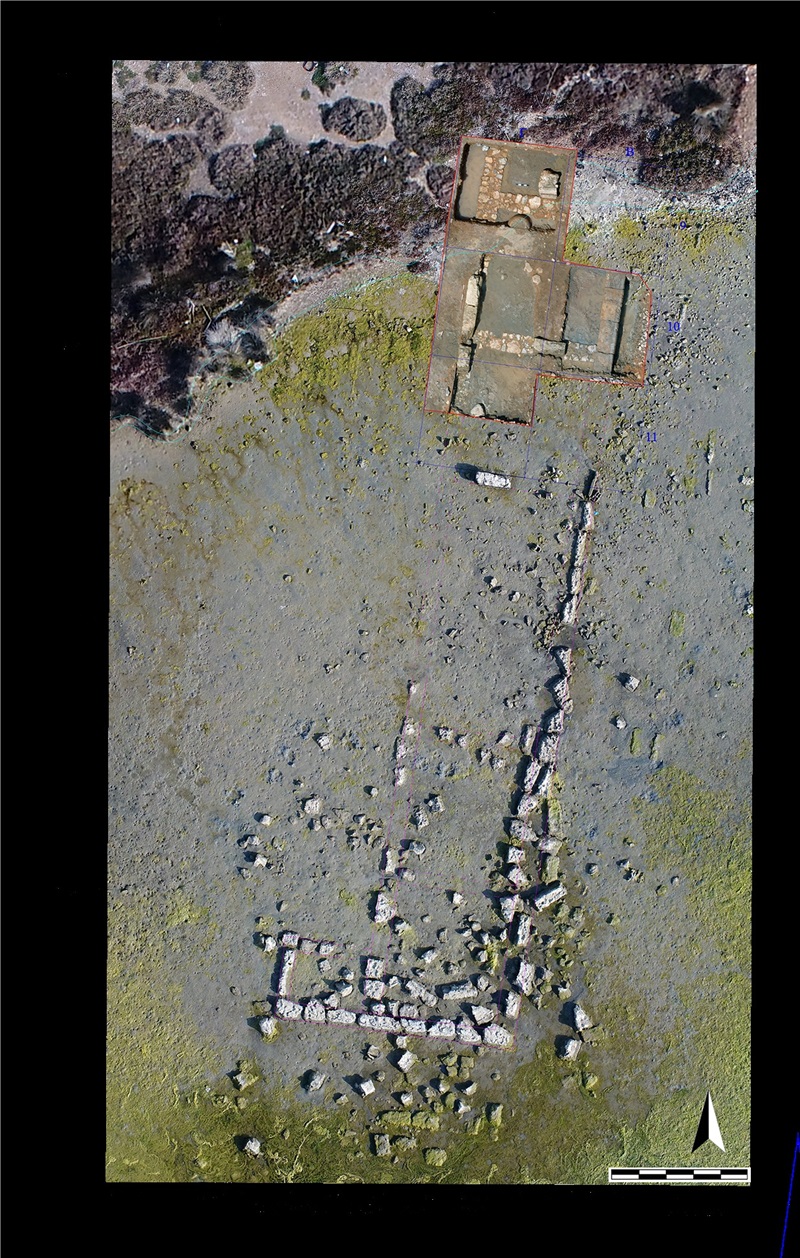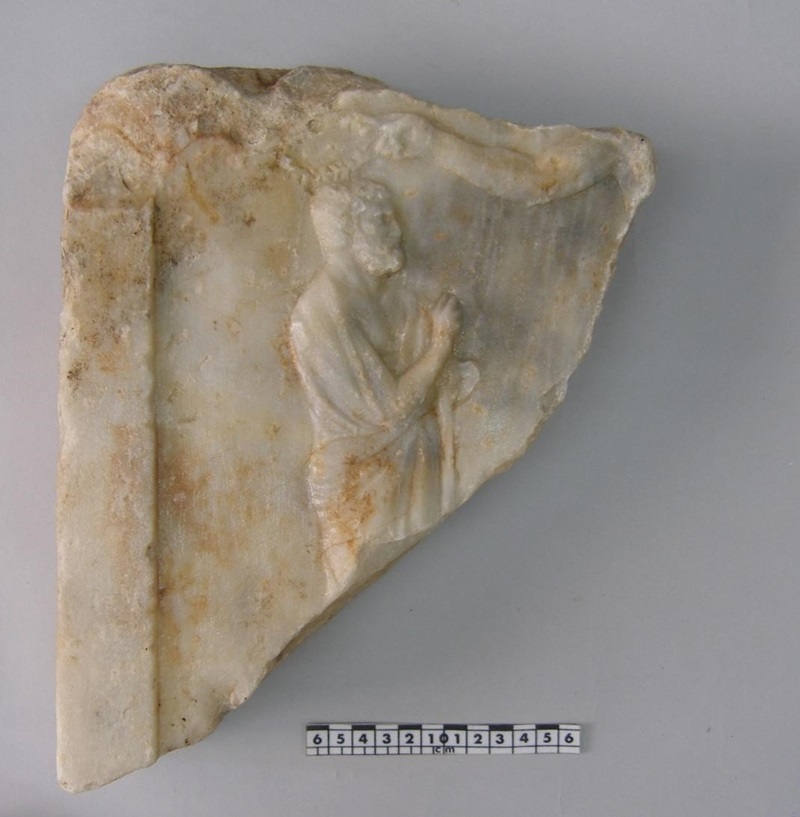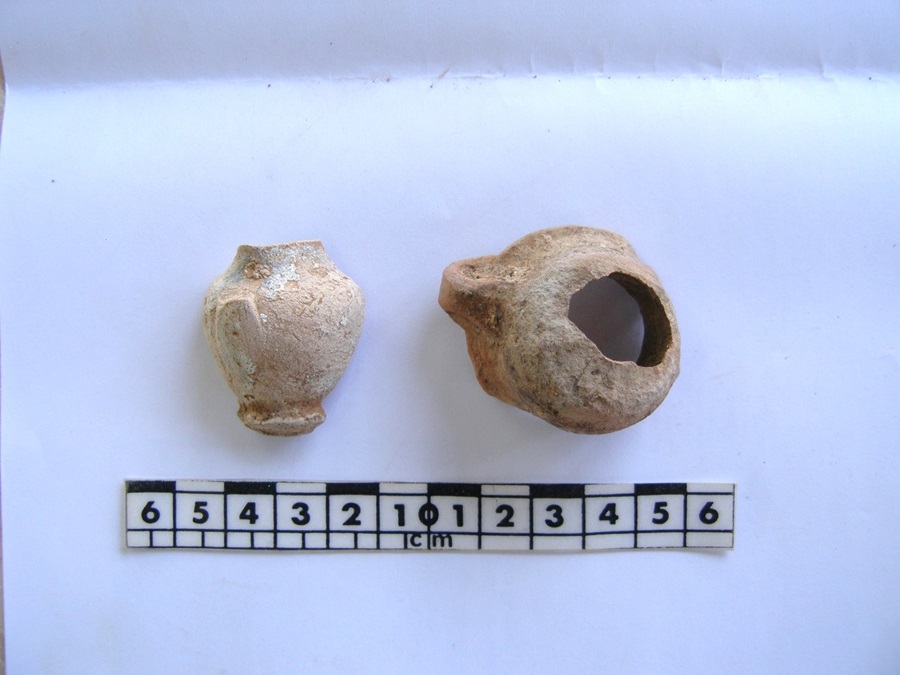
A submerged ancient building was discovered by archaeologists at the ancient Greek city of Salamis, the Ministry of Culture announced on Thursday.
Underwater research on the eastern shores at Ampelaki Bay of Salamis has in recent years uncovered remains of the Classical city, including large sections of the sea wall, and other public constructions.
This year a partially submerged large, long and narrow public building was discovered.
The building, with a constant width of 6 meters, is traced so far, at a length of 32 meters.
Based on the size, shape and arrangement of its spaces, archeologists assume that the building presents all the characteristics of a portico. A porch leading to the entrance of a building, or extended as a colonnade, with a roof structure over a walkway, supported by columns.

Salamis ancient building includes a series of at least 6-7 rooms
The interior includes a series of at least 6-7 rooms, of which one was investigated, with internal dimensions of 4.7 x 4.7 meters., with large storage pits. It has solid walls, about 60 centimeters thick, made of large hewn stone plinths.
The ancient remains, as is the case with other adjacent structures, is stripped of its building material, because the specific area has been a convenient field for obtaining building material throughout the years, until the end of the 19th century.
The excavation of the building also yielded a number of mobile findings. A large amount of pottery from various periods was recovered.

The ceramic finds related to the building’s function include abundant fragments of various types of vases and ceramics from the Classical-Hellenistic period.
More important is the set of Athenian colored vases and shells of the Late Classical period (4th century BC). Many clay objects were also collected, mainly amphora stoppers, fragments of marble objects and 22 bronze coins, Athenian and others.
Of the marble findings, two are of particular importance and date back to the 4th century.
The first is a column fragment with part of an inscription. The second is the upper part of a stele, with part of a relief representation, of which the bare muscular right hand of a large figure, possibly a hero crowning a standing bearded man is preserved.

Archaeologists say that the discovery of the building and its contents is a very important new element for the study of the topography and residential organization of the ancient city.
Salamis was probably first colonized by Aegina and later occupied by Megara, but became an Athenian possession in the time of Solon or Peisistratos, following the war between Athens and Megara around 600 BC.
According to Strabo, the ancient capital was on the south of the island; in classical times it was to the east, on the Kamatero Peninsula overlooking the Strait of Salamis; in modern times it is on the west.
According to Homer’s Iliad, Salamis took part in the Trojan War with twelve ships under the leadership of Ajax (Aias).
Salamis island is known for the Battle of Salamis, the decisive naval victory of the allied Greek fleet, led by Themistocles, over the Persian Empire in 480 BC. It is said to be the birthplace of Ajax and Euripides, the latter’s birth being popularly placed on the day of the battle.
Related: Archeological Finds Shed Light on Ancient Greek Battle of Salamis
See all the latest news from Greece and the world at Greekreporter.com. Contact our newsroom to report an update or send your story, photos and videos. Follow GR on Google News and subscribe here to our daily email!



